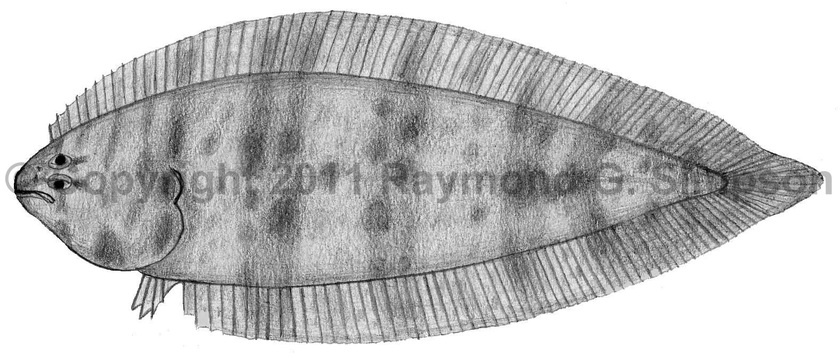
Common Name
Caribbean Reef Tonguefish
Year Described
Robins and Randall, 1965
Identification
Dorsal Fin Rays: 70-76
Anal Fin Rays: 55-61
Pectoral Fin Rays: none
Pelvic Fin Rays: 4
Caudal Fin Rays: usually 12, rarely 11, 13, or 14
Longitudinal Scale Rows: 55-65
Vertebrae: 39-42
Pterygiophore pattern (1st three interneural spaces): 1-3-2, rarely 1-2-2 or 1-3-3
Other diagnostic characters include: pupillary operculum absent, no scales on blind side dorsal/anal rays, teeth on all jaws, and ocular side jaw without fleshy ridge.
Color
White or yellowish base color with light brown blotches and 2-7 indistinct crossbands formed by even darker brown blotches. Some individuals have bands reduced to blotches along midline of eyed side with fainter mottling. Bands can continue onto the bases of the dorsal and anal fins. Rear third of dorsal and anal fins darker than anterior portion. Caudal fin dark. Peritoneum unpigmented. Blind side with a peppering of melanophores on trunk, rear third of body, and near the fin bases
Size
A small species, averaging 25-40mm. Maximum 50mm.
Habitat
A shallow water species (6-39m), on sandy bottoms near reefs.
Range Map

Range
Scattered records from the Caribbean Sea: continental and insular waters from Florida to Venezuela
References
Munroe, T.A. 1998. Systematics and ecology of western Atlantic tonguefishes (Symphurus: Cynoglossidae: Pleuronectiformes). Fish. Bull. 96(1):1-182.